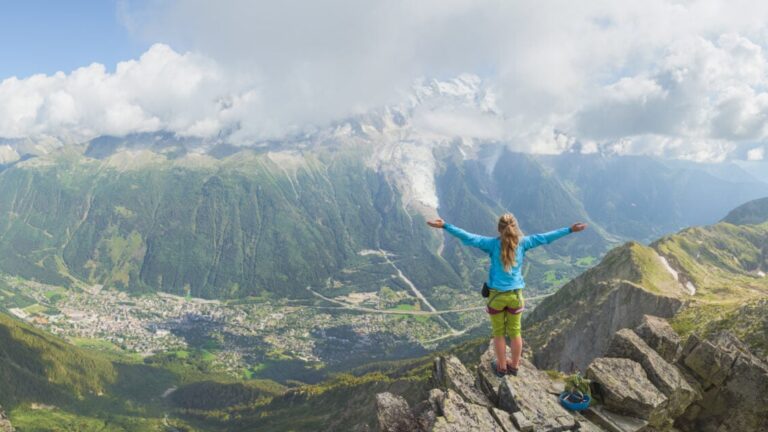We’ve never met a hiker who doesn’t have the Tour du Mont Blanc (TMB) near the top of their bucket list. And why wouldn’t they?
Spanning three countries—France, Italy, and Switzerland—it packs spectacular alpine scenery, charming villages, and three world-class cuisines into a single 9-14-day hike. However, packing for it can feel like a mountainous challenge itself.
Worry not! We’ve created a comprehensive packing list for the Tour du Mont Blanc with plenty of essential tips so you can focus on enjoying your trek in 2026.
Pack Light, Prepare for Everything. Wait, What?
When packing for the Tour du Mont Blanc trail, the goal is to find the perfect balance between #1 – being prepared for mountain weather and #2 – keeping your pack lightweight.
The trail’s diverse landscapes mean you’ll encounter everything from sunny valleys to chilly, windy mountain passes. Proper preparation ensures you’re ready for every twist and turn—both literal and figurative. Let’s dive into what you’ll need to pack.
Best Backpack for the Tour du Mont Blanc
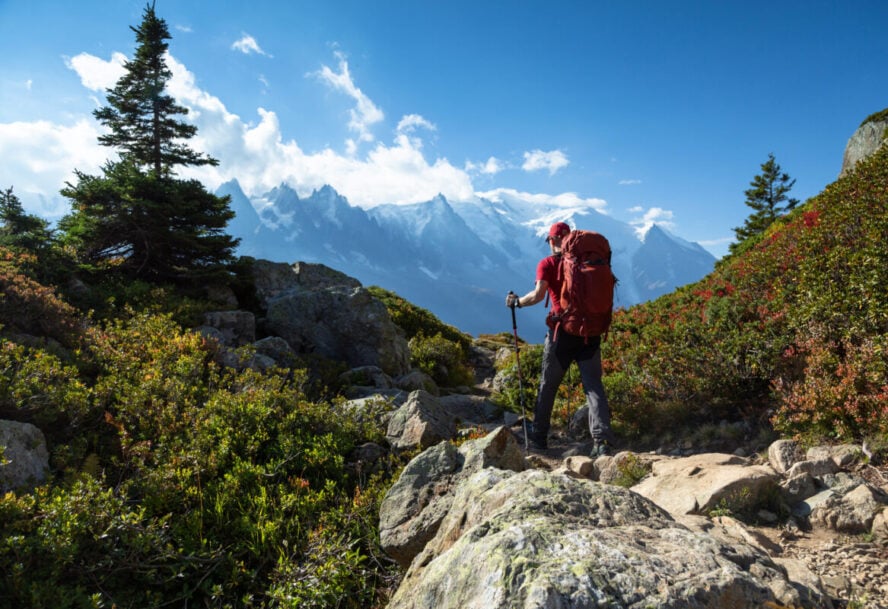
Your backpack will carry your life for the duration of the hike. A bit dramatic, but it’s true. By choosing the right size and features, you’re making sure your gear will stay organized and your back stays happy!
What size pack do I need for the Tour du Mont Blanc?
Your backpack is your lifeline on the TMB hike, so choosing the right size is critical. If you’re going for a hut or hotel-based Tour du Mont Blanc trek, a 30-40 liter pack should suffice. This size allows space for clothes, food, and essentials without unnecessary weight.
If you plan to camp along the way, opt for a larger pack—50-60 liters—to accommodate your tent, sleeping bag, and extra gear.
Look for features like an adjustable harness, hip belt pockets, and side compression straps. Comfort is key, so try your pack with weight before hitting the trail. Brands like Osprey, Deuter, and Gregory offer excellent options.
You want to make sure it’s comfortable, that you’ve tried it on, that you’re not just kind of buying it brand new and then just putting it straight on and off you go. You probably want to have experienced, ou know, doing a hike so that you know how high up on your back you want it to sit, and you can buy rucksacks of varying length. – Emma Jack, How to Hike the Iconic Tour du Mont Blanc.
Best Shoes for the Tour du Mont Blanc
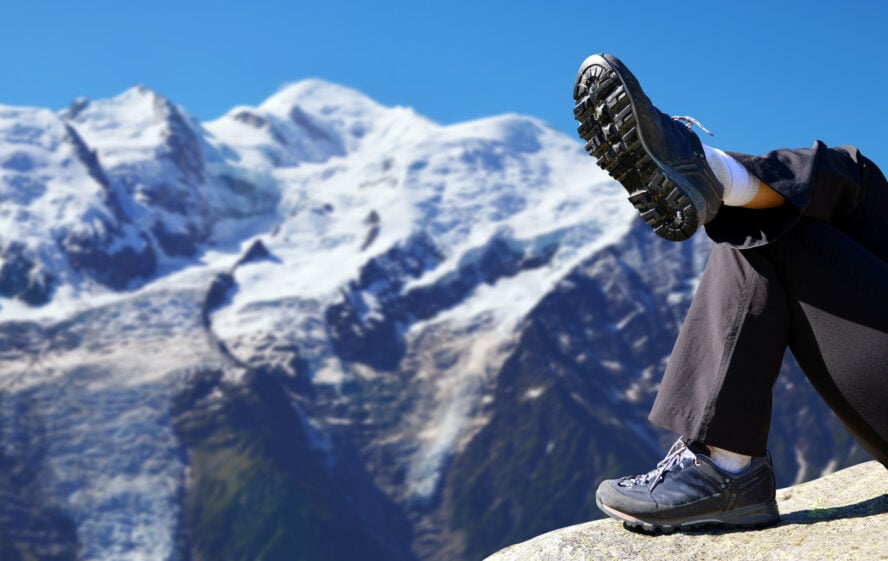
Your feet are your foundation on the trail. The right shoes will minimize blisters and keep you sure-footed on every twist, turn, and rocky incline.
What shoes are recommended for the Tour du Mont Blanc?
Footwear can make or break your Mont Blanc hiking tour. Invest in a pair of lightweight, waterproof hiking boots or trail shoes with excellent grip and ankle support. The trail’s rugged terrain means you’ll be traversing rocks, mud, and steep inclines, so a sturdy sole is essential.
If you’re debating between boots and trail runners, consider your hiking style and the weather forecast. Boots provide more support but can be heavier, while trail runners are lightweight and agile, though less protective. Whatever you choose, break them in before your trip to avoid the dreaded blister apocalypse.
Clothes for the Tour du Mont Blanc
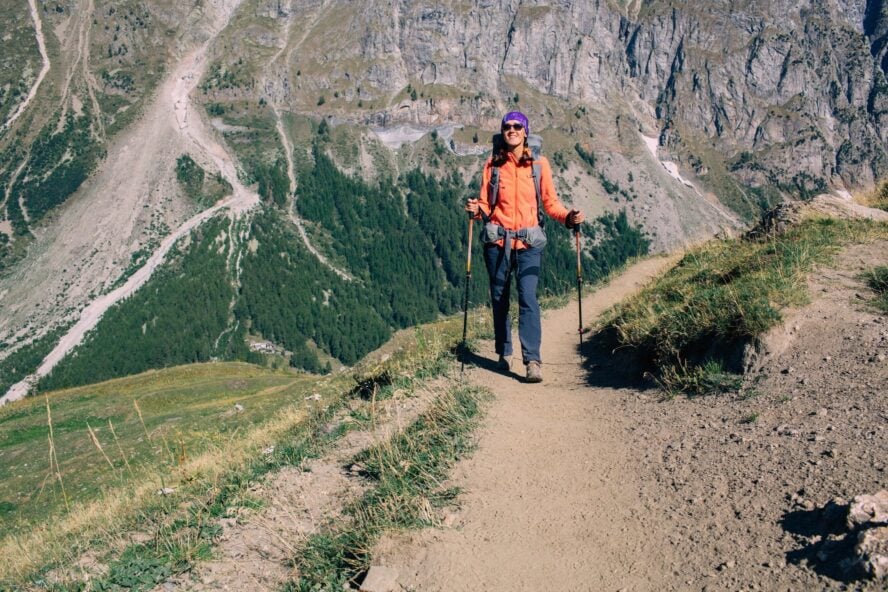
Dressing for the classic Tour du Mont Blanc trek is all about variety. From sunny valleys to chilly summits, you’ll need versatile clothing to match the trail’s unpredictable conditions.
What do you wear on the Tour du Mont Blanc?
Layers, layers, layers! The weather on your Mont Blanc walk can change faster than your altitude. Start with moisture-wicking base layers (merino wool or synthetic). Add an insulating mid-layer like a fleece or lightweight down jacket for cooler moments. Finally, pack a waterproof and windproof outer shell for those inevitable rain showers.
For bottoms, hiking pants are a must, and a pair of shorts for warmer days is a nice bonus.
Do I need rain pants on the Tour du Mont Blanc?
Rain pants can be a lifesaver on wet and windy days, especially at higher elevations. They’re lightweight and easy to pack. Go for a pair with side zippers for quick on-and-off functionality.
Do I need a down jacket on the Tour du Mont Blanc?
Yes! Even in summer, alpine evenings and mornings can be chilly. A lightweight, packable down jacket provides an excellent warmth-to-weight ratio and takes up minimal space in your pack.
Tour du Mont Blanc Camping Gear
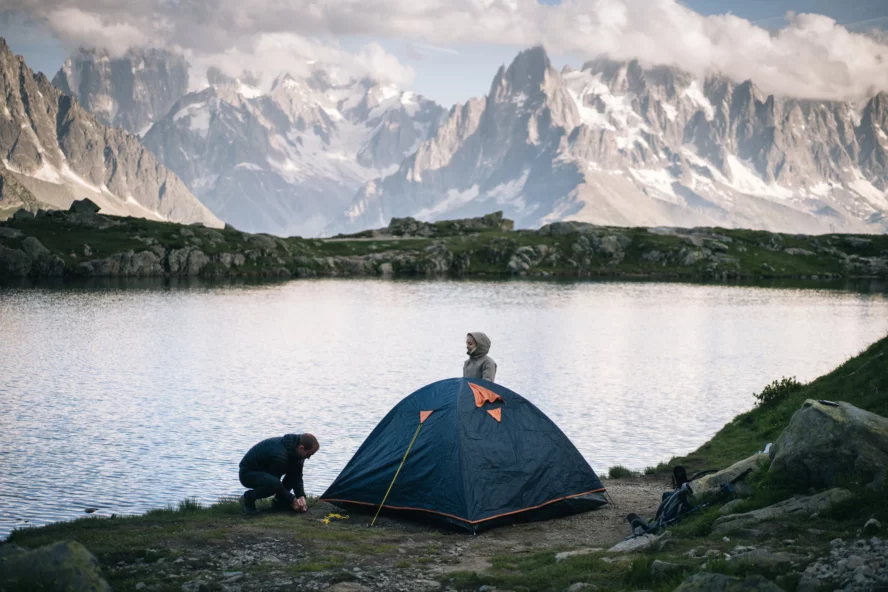
Planning to camp? You’ll need lightweight, durable camping gear on the Tour du Mont Blanc that can handle alpine nights without weighing you down during the day.
What camping gear should I bring to the Tour du Mont Blanc?
For campers, a lightweight tent, a sleeping bag rated for alpine conditions (around 0°C/32°F), and an inflatable or foam sleeping pad are non-negotiable. Opt for gear designed for backpacking to keep weight down.
Do I need a sleeping bag liner for the Tour du Mont Blanc?
Even if you’re staying in refuges, adding a sleeping bag liner to your Tour du Mont Blanc packing list is highly recommended. It adds warmth, is hygienic, and is often required by hut rules. A lightweight silk or synthetic liner works perfectly.
Food, Drinks & Snacks
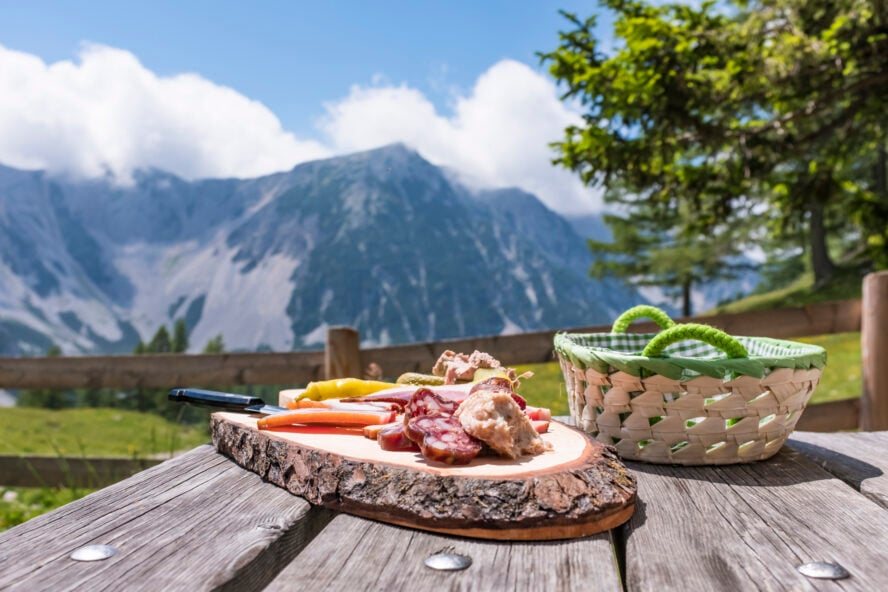
Fueling your body is just as-if not more-important as prepping your pack. Knowing what to eat and how much water to carry will ensure you stay energized for those high-mileage days on the trail.
What to eat on the Tour du Mont Blanc?
The huts along the Tour du Mont Blanc hike often serve hearty meals, but it’s wise to carry snacks for the trail. Think energy bars, dried fruit, nuts, and chocolate. For campers, lightweight freeze-dried meals are ideal. Don’t forget to indulge in local specialties like fondue and charcuterie when passing through villages!
How much water should I carry on the Tour du Mont Blanc?
Two liters is a good starting point. Water sources are abundant along the trail, but carrying a refillable water bottle or hydration bladder ensures you stay hydrated, especially if you’re planning on exploring the hidden parts of Mont Blanc.
Other Stuff You Might Need On Your Tour du Mont Blanc Packing List
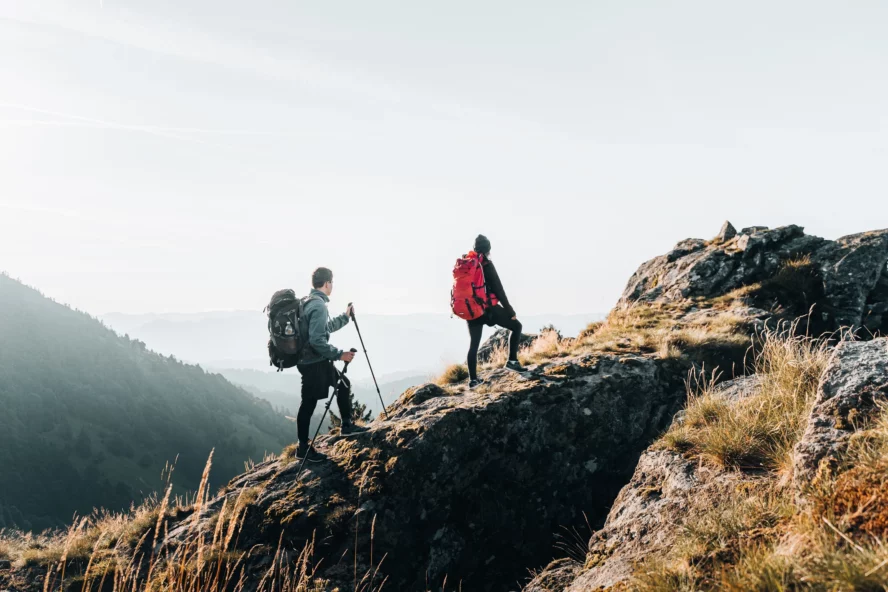
Don’t overlook the small but mighty extras. From hiking poles to cash, these essentials can make all the difference.
Do I need hiking poles on the Tour du Mont Blanc?
You don’t necessarily “need” hiking poles, but they’re always good to have around! Hiking poles are invaluable for steep ascents and tricky descents, as well as reducing stress on your knees. Go for collapsible poles, as they are easy to stash when not in use.
Should I add a water filter to my Tour du Mont Blanc packing list?
While the trail has plenty of clean water sources, a small water filter or purification tablets offer peace of mind, especially if camping.
Will I need any technical climbing equipment?
Nope! The TMB is a trekking route, so if you’re not planning on getting into any climbing adventures in Chamonix, there’s no need for ropes, harnesses, or crampons. However, good footwear and trekking poles are essential.
How much cash should I bring on the Tour du Mont Blanc?
Many huts and small shops only accept cash. Plan for €200–€300 to cover meals, snacks, and extras along the way. An emergency stash is always a good idea.
You’ve Got the Packing List – Time to Hike the Tour du Mont Blanc!
Packing for the Tour du Mont Blanc is all about preparation and smart choices. By following this guide, you’ll have everything you need to conquer the Tour du Mont Blanc with confidence. Remember: pack light, layer smart, and keep a sense of adventure in your pocket.
See you on the trail!
NOTE: Each of our Mont Blanc hiking trips comes with its own gear list, created specifically for the hike by your guide. If you’re going on a hiking adventure with us, please refer to the gear list from the trip listing. Check out our Mont Blanc hiking tours and find your ideal adventure!

